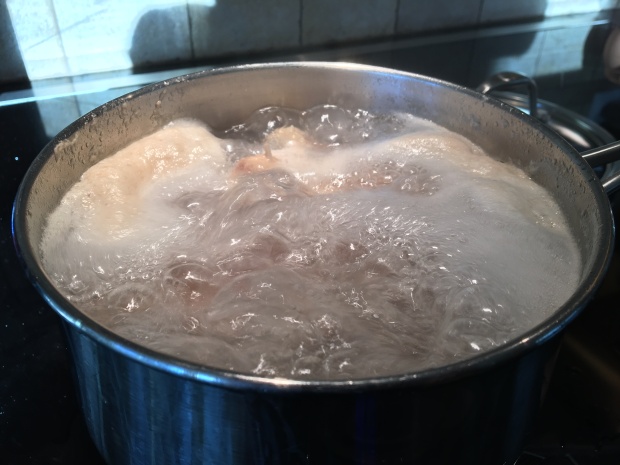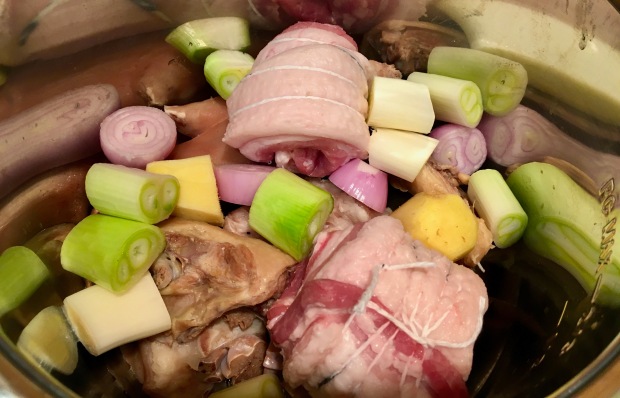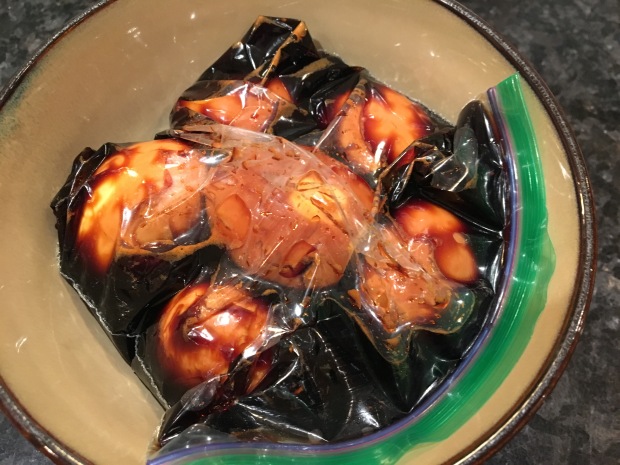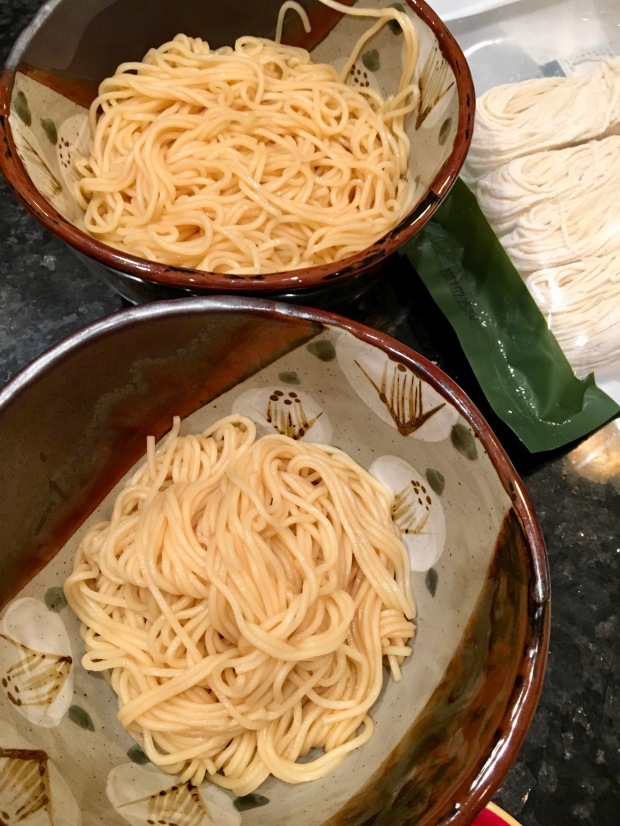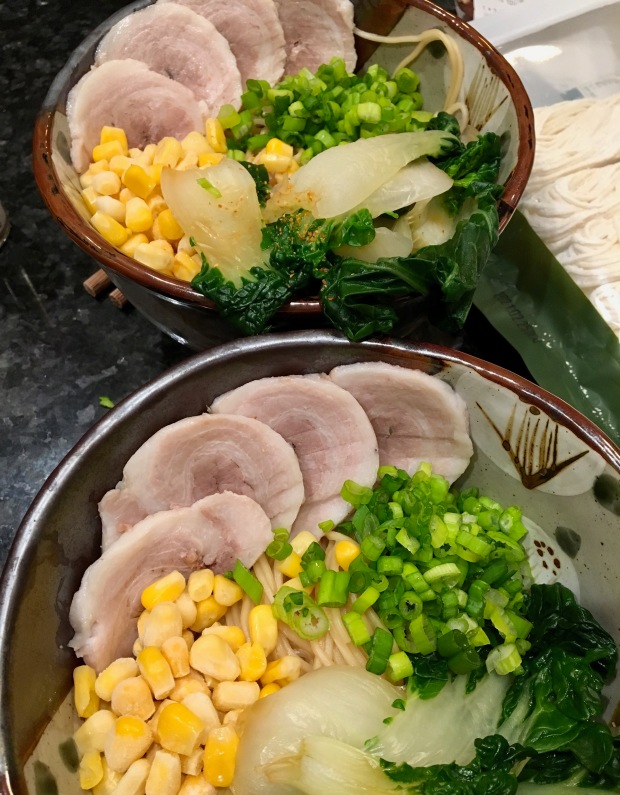
Creamy Mushroom Soup
Ingredients
- 4 cloves garlic (minced)
- 1 bunch green onions (chopped, some of the greens separated for garnish)
- 2 Tbsps butter
- 900 g mix cremini and oyster mushrooms (32 oz; chopped)
- 1/2 cup white wine
- 1/4 tsp oregano
- 1 Tbsp dried dill
- 2 cups milk
- 2 cups broth (beef, chicken, mushroom or vegetable)
- 1/4 cup cream cheese (cut into small chunks)
- salt and pepper (to taste)
Instructions
- Place a medium to large pot on medium-high heat. Add butter, garlic and the green onions (except small amount of greens reserved for garnish) to the pot, and sauté until fragrant.
- Add the mushrooms, and sauté, stirring regularly, until mushrooms are fully cooked. By the time they are fully cooked, they will likely have released quite a bit of liquid in the pot.
- Add the white wine, oregano and dill, stirring well. Allow the mix to cook for around 5 minutes before turning the heat down to medium heat.
- Add the milk and broth. Allow the soup to heat up, then remove about a cup to a separate small bowl and add the cream cheese and stir until the cream cheese has mostly melted and become more liquid. Pour this mix into the soup and stir well until fully mixed into the soup
- Taste-test and add salt and pepper to prefer taste. Cook for another 5 minutes. Remove from heat, and serve immediately, with reserved green onions as garnish.
And now for the details…
Hi there friends! I am not sure about you… but comfort food is definitely where my brain and stomach seem to be leading me lately. Not sure if it’s the changing seasons (we are into November and here in Canada, and I am looking out my window right now at a light blanket of snow on the ground), the continued impacts of this pandemic on our work and personal lives, or just a phase of my body wanting and needing familiar food for my soul, but here we are and I wanted to share this with you in case you are feeling similar, and you find mushroom soup equally as comforting as I do.
I love mushrooms. Like. So much. I am pretty sure I’ve mentioned this in previous posts, so I won’t wax poetic too much on the glory that are mushrooms, but dang, they’re good. High in umami, and with a slightly meaty texture when cooked, they provide a savoury bite that is hearty and satisfying. For this soup, I suggested cremini and oyster mushrooms in the recipe, but you can use a mix of whatever mushrooms you have available. Only have button mushrooms? Sounds great, this soup will be delicious. Have access to mushrooms a bit more on the pricey end, like morels, chanterelles or porcini? Toss them into the mix, they will be fantastic.

To get everything started, we are going to be chopping everything up. The garlic, green onions and mushrooms are all going to be chopped up to go into the pot. For the green onions, reserve some of the chopped green parts to the side to garnish the soup at the end. The primary reason I am using green onions in this recipe is I admittedly ran out of regular onions and shallots. So… green onions it was. If you don’t have green onions, you can instead use half of a small white onion or a shallot, minced fairly fine.

Place a medium to large pot on the stove and set it on medium-high heat. Add the butter, allow it to melt, and then add the garlic and the onions (less the greens you reserved to the side). Stir, allowing the onions and garlic to cook until they start releasing their delicious smells and the onions have started to soften. This shouldn’t take very long, a couple minutes at most.
Next, we add the mushrooms. You can add them all in one fell swoop, or add them a bit at a time, allowing them to cook down before adding the next bit. I like doing it the second way because it feels like I’m making better progress, but honestly, I think both methods take the same amount of time in the end.
As mushrooms cook, they release a heck of a lot of moisture. It doesn’t seem like they would when they are raw. They are kinda dry and spongey in texture. But when you cook them down they have a LOT of liquid to release. For this recipe, since our end goal is a soup, we are not as concerned with avoiding the liquid. Some recipes you see for sautéing mushrooms will advise to use a wide pan and not crowd it to avoid boiling the mushrooms. Well… we’re makin’ soup folks, so the liquid stays! When the mushrooms are cooked and there is liquid at the bottom of the pot, do not worry about draining it or cooking it off, that is just mushroom broth that will add to the soup!
The next step will be to add our spices (the oregano and dill), some salt and pepper, and the wine. We are going to keep the heat at medium-high for about five minutes to cook down the wine somewhat. Partially to help reduce it, partially to allow the alcohol to cook off before we add the broth. After five-ish minutes, turn the heat down to medium.
Next, add the milk and broth to the soup. Depending on whether the milk and broth were at room temperature, or if you brought them straight out of the fridge, you might have to wait a bit to have the soup heat back up. Wait for it to come back up to a simmer.
Different cream soups will use different methods of getting a creamy broth. Some will use flour, others will add heavy cream, and some will blend some of the mushrooms to thicken up the broth. In this case, we will not be going too thick with the broth and we will be using cream cheese to help provide a bit of body to liquid.
In order to get the cream cheese to blend well, we are going to try and dissolve most of it outside of the soup before adding it in. Cut the cream cheese into chunks to get it ready. Ladle some of the hot broth out of the pot into a small bowl. Add the cream cheese to the broth, and mash and stir it until the cream cheese has melted down some and the mixture is no longer lumpy. Add the mixture into the soup and stir in. If you want to just add the cut cream cheese right into the pot and skip this step and just wait for it to all melt and have the potential of a couple little lumps of cream cheese, have at ‘er. Admittedly, this is exactly what I did and just wanted to share a different option to you all that has a better result *eep*
Now is a good time to give the soup a quick taste-test and add additional salt to your personal taste (do I almost always add salt at this stage? Yes I do. Am I a borderline saltaholic? You know I am.) Allow the soup to come back up to a simmer after the addition of the cream cheese mixture, about another 5 minutes. Then ladle out the soup, top with the reserved green onions for garnish and serve immediately. I like serving this with a piece of crusty baguette to dip into the rich broth!

Happy eating.































